SC 1-23 will prepare a commentary that evaluates recent studies on the radiation dose response for the development of cataracts, also considering the type and severity of the cataracts as well as the dose rate; provide guidance on whether existing dose limits to the lens of the eye should be changed in the United States; and suggest research needs regarding radiation effects on and dose limits to the lens of the eye. The commentary is intended to enhance the previous recommendations from NCRP provided in Report No. 116.
The commentary will take into account the most current information regarding the dose response curve for the development of cataracts including consideration of cataract severity, address possible differences in cataract induction by dose rate, comment on the issue of severity of disease in the context of radiation detriment, open discussion about the appropriate dose limits for protection of the eye from the development of cataracts, determine the associated uncertainties, and identify research needs.
The NCRP President, Co-Chairs, and PAC 1 and PAC 4 Vice Presidents met on August 11, 2013 to develop the scope and contents of the commentary and initiate a preliminary draft to guide the work of the full Committee. On January 14, 2014 the NCRP President, Co-Chairs, select members, and the NCRP Staff Consultant held a teleconference to complete Committee membership and determine the next steps prior to the first meeting by teleconference.
The first meeting of the full Committee was via teleconference (February 19, 2014). At that meeting, further discussion was held regarding the membership of the Committee, basic science issues, and the proposed outline for the commentary. On March 12, 2014 an opportunistic second meeting (face-to-face) of a portion of the Committee was held in Bethesda, Maryland. Further refinement of the outline for the commentary was made and a presentation was provided by P. Tran of the Electric Power Research Institute regarding their activity relating to the lens of the eye issue following issuance of ICRP Publication 118.
The full Committee met (March 24–25, 2014) in Bethesda, Maryland where further review of the preliminary material assembled was conducted, discussion continued regarding the scope and outline of the commentary, and writing assignments were confirmed. Draft material was assembled and distributed to the Committee for the next meeting.
Continuing discussion on the status of writing assignments and content approach were held via webinar/teleconference as: a fourth meeting on April 21, 2014; a fifth meeting on May 16, 2014; and a sixth meeting on June 30, 2014. At the fifth meeting, Wayne Newhauser presented on new detector technology possibly of use for monitoring lens of the eye dose. At the sixth meeting, discussion was focused on what level of content was essential for an NCRP commentary. The working draft progressed through revision 2a by the end of June 2014.
Additional meetings of the Committee were held via webinar/teleconference as: a seventh meeting on July 29, 2014 and an eighth meeting on September 29, 2014. At the seventh meeting, N. Hamada gave a presentation on radiation cataracts and whether they were deterministic effects, stochastic effects, or both. During the seventh and eighth meetings the substantially revised approach to the draft commentary was further developed through revision 3 by the end of September 2014.
Additional meetings of the Committee were held via webinar/teleconference as: a ninth meeting on October 8, 2014, an eleventh meeting on November 20, 2014 and a twelfth meeting on December 18, 2014. A face-to-face meeting (the tenth) of the full Committee took place October 21–22, 2014 at NCRP Headquarters in Bethesda, Maryland. At each of these meetings the Committee moved closer to the final version of the draft commentary and a consensus on the key recommendations, with revision 4i in place by December 17, 2014.
The Committee continued work on the draft commentary and upon completion of a consolidated draft (revision 5) conducted an internal Committee review January 11–26, 2015. Committee comments were reconciled by the Co-Chairs and Staff Consultant. The Committee voted to approve the draft commentary, with minor additional revisions (revision 6), for forwarding to the NCRP Secretariat to commence the PAC 1, PAC 4, and subject matter experts (SME) review process. The document was sent to the Secretariat on March 4, 2015. The Secretariat posted the official NCRP review version to the PAC/SME reviewers on March 12, 2015 with comments due by April 9, 2015.
Following the receipt of additional comments on April 28, 2015 the Committee continued to reconcile PAC/SME comments during the third quarter. The PAC/SME comments reconciliation process neared completion by the end of the fourth quarter 2015 and the draft commentary was updated. The revised draft commentary was provided to the Committee for approval prior to the 13th Committee meeting via webinar/teleconference on January 14, 2016 where it was approved for forwarding to NCRP for commencing Council review.
Council review began on February 8, 2016 and was completed with late arriving comments added to the comment reconciliation matrix by March 21, 2016. The comment reconciliation matrix and an updated draft commentary are expected to be completed in the second quarter.
NCRP is grateful to the Centers for Disease Control and Prevention and the U.S. Nuclear Regulatory Commission for financial support of this work.
The membership of SC 1-23 is:

ELEANOR A. BLAKELY
is a retired Senior Staff Biophysicist with a 47 y professional career at the Lawrence Berkeley National Laboratory investigating molecular, cellular and animal radiobiological effects of charged particle beams. She currently is an Adjunct Research Professor in both the Departments of Basic Sciences, and of Radiation Medicine at Loma Linda University, School of Medicine, Loma Linda, California. Dr. Blakely was awarded a PhD in Physiology from the University of Illinois at Champaign-Urbana as a U.S. Atomic Energy Commission Special Fellow in Radiation Science and Protection. Her professional activities have included service on advisory panels for several hospitals, universities, and numerous federal agencies including the U.S. Department of Energy (DOE), the National Institutes of Health (NIH), and the National Aeronautics and Space Administration (NASA); on Editorial Boards for several journals; Appointed Member, Diagnostic Radiology Study Section-Division of Research Grants, NIH; Advisory Committee Member, International Atomic Energy Agency; Scientific Director, NASA Space Research Summer School; and Elected Officer of the Radiation Research Society: Biology Councilor and Secretary Treasurer. In 2000 she was elected to NCRP and served on Scientific Committee (SC) 75 that produced NCRP Report No. 132, Radiation Protection Guidance for Activities in Low-Earth Orbit; and SC 1-7 that produced NCRP Report No. 153, Information Needed to Make Radiation Protection Recommendations for Space Missions Beyond Low-Earth Orbit. Dr. Blakely has received several awards including the Robert Emerson Graduate Teaching Award, School of Life Sciences, University of Illinois, the Lawrence Berkeley Laboratory Outstanding Performance Award, the DOE Office of Science Outstanding Mentor Award, the Lawrence Berkeley Laboratory Technology Transfer Award, the 35th NCRP Lauriston S. Taylor Lecturer (2011), Martin Schneider Memorial Lectureship, University of Texas Medical Branch, Galveston, Texas (2014), the Berkeley Laboratory Director's Award for Exceptional Achievement: the Berkeley Lab Citation Award (2015), Fellow of the American Association for the Advancement of Science (2016), Distinguished Services Award of the Radiation Research Society (2017), Distinguished Emeritus Member of the NCRP, and was the recipient of the 20th Gray Medal of the International Commission on Radiation Units and Measurements (2019). |

LAWRENCE T. DAUER
is an Attending Physicist in the Departments of Medical Physics and Radiology at Memorial Sloan Kettering Cancer Center and serves at their Corporate Radiation Safety Officer. He serves as a member of the Nuclear and Radiation Studies Board of the National Academy of Sciences, Engineering and Medicine. He is a former Board member and current Council member of NCRP and is the Scientific Director of the Million Person Study. He has served as Chair or Co-Chair on several NCRP scientific committees associated with radiation protection of workers, patients, and members of the public. He served 7 y on the International Commission on Radiological Protection Committee 3, Radiation Protection in Medicine. |

Elizabeth Ainsbury
|
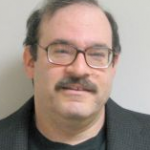
JOSEPH R. DYNLACHT is an Associate Professor in the Department of Radiation Oncology at the Indiana University School of Medicine and a member of the Experimental Therapeutics Division of the Indiana University Simon Cancer Center. He received a BS degree in Biology from Florida State University and a PhD in Cellular and Molecular Radiobiology from Colorado State University before completing a post-doctoral fellowship at the University of California, San Francisco. Dr. Dynlacht teaches annual courses entitled "Radiation and Cancer Biology" to graduate students, and to radiation oncology residents and radiation therapy students, and is the Practice-Based Learning and Improvement Competency Director for the Medical School. Dr. Dynlacht's research interests include the development of agents that reduce normal tissue damage after irradiation (specifically damage to the heart and lens), development of radiation countermeasures, mechanisms of heat- and radiation-induced cell killing, and development of thermally-activated chemotherapeutic compounds. He has served on advisory panels for several organizations, including Brookhaven National Laboratory, the National Institutes of Health (NIH), and the National Aeronautics and Space Administration (NASA), and is an Associate Editor for the journal Radiation Research. His research has been supported by NIH, NASA, and the U.S. Department of Defense. |
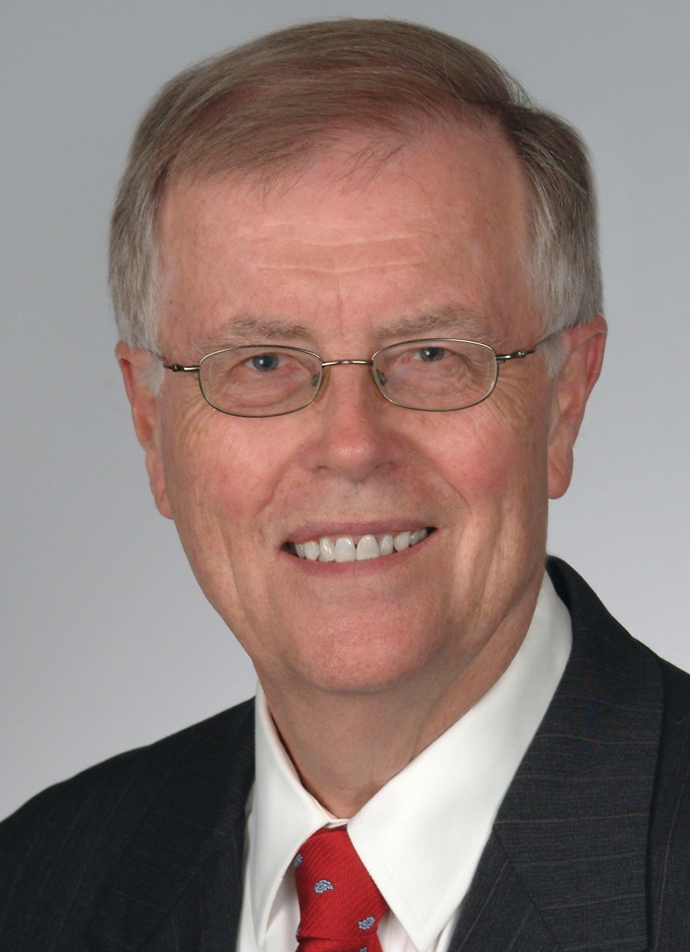
David G. Hoel
|
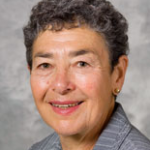
Barbara E.K. Klein
|
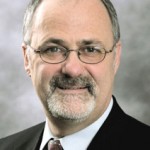
DONALD M. MAYER recently retired (2015) from Indian Point Energy Center as Director of Indian Point Unit 1 and Special Projects. Mr. Mayer has more than 30 y of experience in the nuclear power industry. He joined the New York Power Authority (NYPA) in 1982 as a radiological engineer at Indian Point Unit 3 and worked in the radiation protection field for 20 y, including as Radiation Protection Manager. Mr. Mayer also spent approximately 2 y as General Manager of Unit 3 plant services under NYPA where he was responsible for site security, emergency planning, radiation protection licensing, and corrective action programs. Since that time Mayer has lead various major projects for Entergy including site integration after Entergy’s plant acquisition of Unit 2 and led the Unit 1 project culminating in the removal and dry storage of the spent fuel. Mr. Mayer was named Director of Unit 1 in 2007. In 2008, at the culmination of the Indian Point Independent Safety Evaluation, he was named as the senior management sponsor for the response and implementation of recommendations. Mr. Mayer holds a BS in Biology from Syracuse University, an MS in Radiological Science from the University of Lowell, a Master’s in Business Administration from Mt. St. Mary’s College, and is a Certified Health Physicist. |

Christina R. Prescott
Dr. Prescott received her BA in biophysics from Columbia University and earned her MD and PhD (neuroscience) from the University of Colorado Health Sciences Center. She completed an internship at the Hospital of St. Raphael in New Haven, Connecticut, and her ophthalmology residency at Yale University. Dr. Prescott then completed a fellowship in cornea, refractive surgery and external disease at the Massachusetts Eye and Ear Infirmary of Harvard University. |

Raymond H. Thornton
He received his MD from the University of Pittsburgh School of Medicine in 1998. Following an internship at Mercy Hospital in San Diego, he completed both Diagnostic Radiology residency and Interventional Radiology fellowship training at the University of California at San Francisco. In addition, he holds bachelor's, master's and doctoral degrees from The Juilliard School, where he trained as a classical pianist prior to medical school. He resides in northern Westchester county where he practices horticulture and plantsmanship as a hobby. |
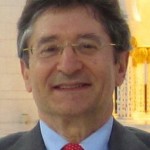
Eliseo Vano
|
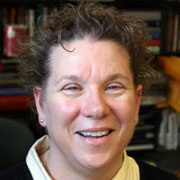
GAYLE E. WOLOSCHAK
is a Professor of Radiation Oncology and Radiology at Northwestern University Feinberg School of Medicine in Chicago and Associate Dean of the Graduate School. She and her group have been involved in studies of molecular consequences of radiation exposure, late tissue effects associated with radiation, and the use of radiation-inducible nanomaterials for cancer imaging and therapy. Dr. Woloschak also teaches radiation biology to radiation oncology and radiology residents, cardiology trainees, and graduate students and manages the Advanced Grant Writing Workshop for the Radiological Society of North America (RSNA). She earned her PhD in medical sciences from the University of Toledo (Ohio) and did post-doctoral studies in molecular biology at the Mayo Clinic. She has served on review panels for various federal agencies including the National Institutes of Health, the National Aeronautics and Space Administration, the U.S. Department of Energy, RSNA, the U.S. Army Medical Research and Materiel Command, and others. She is currently Editor-in-Chief for the International Journal of Radiation Biology, Section Editor for PLOS One, and serves on a variety of editorial boards. She is Chair of NCRP Program Area Committee 1, has served on organizational committees for several NCRP meetings, and has been involved in committees for several NCRP reports. She also served as President of the Radiation Research Society and is a member of the U.S. delegation to the United Nations Scientific Committee on the Effects of Atomic Radiation. |
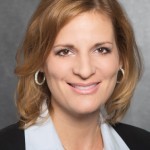
Cynthia Flannery
is a Senior Health Physicist on the Medical Radiation Safety Team at the U.S. Nuclear Regulatory Commission (NRC). She joined NRC in 2004 and has 28 y of experience as a health physicist for medical uses of radiation as well as in military and research organizations. Prior to NRC, she served as the Radiation Safety Officer for the Defense Threat Reduction Agency and as the Radiation Safety Officer at the Food and Drug Administration (Center for Food Safety and Applied Nutrition). Ms. Flannery graduated from Georgetown University with an MS degree in Health Physics and from the University of Wisconsin with a BS degree in Nuclear Medicine Technology. She was certified in the comprehensive practice of health physics by the American Board of Health Physics in 2001. She previously served on and chaired the American Board of Health Physics as well as the Part I Examination Panel. Beginning in 2023, she will serve as Director on the American Academy of Health Physics Executive Committee. |

Lee E. Goldstein
Dr. Goldstein’s work is focused on understanding the role of abnormal protein aggregation in chronic degenerative disorders of aging. The work in his laboratory concentrates on Alzheimer’s disease, age-related cataracts, and other common diseases of aging that involve pathogenic protein aggregation. His team recently discovered the first evidence of Alzheimer’s disease-associated amyloid pathology outside the brain as well as a new transcription factor that plays a crucial role in cellular differentiation within the lens and brain. He and his laboratory are developing a laser-based diagnostic technology that will hopefully detect Alzheimer’s disease years before the first symptoms emerge. Dr. Goldstein has received honors from numerous organizations, including the Harvard Medical School, National Institute of Mental Health, National Alliance for Research on Schizophrenia and Affective Diseases, Alzheimer’s Association, the American Psychiatric Association, and the Optical Society of America. He is a Diplomate of the American Academy of Neurology and Psychiatry. |
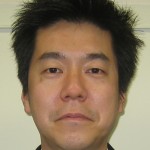
Nobuyuki Hamada
was born in Japan in 1976. He received a BSc in radiological sciences from Ibaraki Prefectural University of Health Sciences, and became a registered radiological technologist in 1999. He earned his MSc and PhD in pharmaceutical sciences from Nagasaki University in 2001 and 2004, respectively. He was a visiting PhD student at the U.K. Gray Cancer Institute for six months in 2003. He was a postdoctoral fellow at the National Institute of Radiological Sciences and in Tohoku University Institute of Development, Aging and Cancer, and a Center of Excellence Associate Professor in Gunma University Graduate School of Medicine. He is currently Senior Research Scientist at CRIEPI Radiation Safety Research Center and Visiting Professor at Hiroshima University Research Institute for Radiation Biology and Medicine. For NCRP, he is a PAC 1 member and was a Consultant to Scientific Committee 1–23 that produced NCRP Commentary No. 26. For the International Commission on Radiological Protection (ICRP), he is a member of Task Groups 111 and 119 and a Mentor, and was a member of Task Group 102 that produced ICRP Publication 152, Associate Editor for Publications 126 through 132, and Assistant Scientific Secretary. For Organisation for Economic Co-operation and Development/Nuclear Energy Agency (NEA)/Committee on Radiological Protection and Public Health, he is a member of High Level Group on Low Dose Research/Radiation and Chemical Adverse Outcome Pathways Topical Group, and was a member of Expert Group on Radiological Protection Science that produced NEA No. 7265 report. He also serves on Consultation Committee for AOP Development for Space Flight Health Outcomes, Associate Editor for Radiation Research, International Journal of Radiation Biology and Frontiers in Oncology, and Editorial Board Member for eight journals such as Mutation Research/Reviews in Mutation Research and PLOS ONE. He was also a member of the International Radiation Protection Association Task Group Phase 3 “The implementation of the eye lens dose limit,” and Chair of Scientific Advisory Board for the European CONCERT LDLensRad. He has been involved in various radiation effect studies since 1998, his current focus being placed on tissue reactions (e.g., circulatory and ocular disease). He has published >130 papers in peer-reviewed international journals and has received >20 awards. |

Phung Tran
|

Michael P. Grissom
MICHAEL P. GRISSOM is a Technical Staff Consultant for NCRP and is the President of MPG-HP, Inc., Riverside, California a private consulting firm. He is a recognized authority on operational health physics issues, particularly related to radiation protection in management, military, reactor, medical, and accelerator operations. During 20 y of service in the U.S. Navy, Mr. Grissom served as a Radiation Safety/Laser Safety Officer (hospital) and provided Radiation Health Officer support to the Naval Radiological Controls Program (propulsion, industrial and weapons). Mr. Grissom conducted research in biophysics and radiobiological effects at the Armed Forces Radiobiology Research Institute, Bethesda, Maryland as a junior then senior scientist and served as the Director of Medical Records Search for the Navy Nuclear Test Personnel Review, Office of the Chief of Naval Operations, Washington, DC. Mr. Grissom provided support to the Effluent and Dose Assessment Group, Three Mile Island Unit 2 Recovery Team in 1979 to 1980. He has delivered numerous presentations at scientific and professional society meetings. In 2012, Mr. Grissom became a Fellow of the Health Physics Society (HPS). He previously received the HPS Volunteer Award for services associated with the Medical Health Physics Section and is a Past President of the HPS Accelerator Section. He also served in a number of positions for Stanford University over a period of 16 y at the Stanford Linear Accelerator Center National Accelerator Laboratory, Menlo Park, California including Department Head, Operational Health Physics, and Assistant Associate Director for Environment, Safety and Health. |



 is a Principal Radiation Protection Scientist at the Public Health England (PHE) Centre for Radiation, Chemical and Environmental Hazards, with 7 y of experience in the field of biomarkers of radiation exposure, in particular in mathematical and statistical analysis of data. In recent years, Dr. Ainsbury has taken a growing interest in radiation induced cataracts and has helped to initiate a growing scientific and public health policy research program at PHE, with the core aim of contributing both to scientific understanding of the mechanisms of cataract induction and providing the context for appropriate translation of the basic research to current and future radiation protection policy and practice. Recent work includes publishing a comprehensive review of the current status of knowledge in the field, completing a survey of occupational lens doses for U.K. medical sector workers, reviewing the implications of the International Commission on Radiological Protection’s recent proposals for U.K. stakeholders. Dr. Ainsbury is also participating in a number of ongoing collaborative research projects focused on low-dose-induced early lens changes.
is a Principal Radiation Protection Scientist at the Public Health England (PHE) Centre for Radiation, Chemical and Environmental Hazards, with 7 y of experience in the field of biomarkers of radiation exposure, in particular in mathematical and statistical analysis of data. In recent years, Dr. Ainsbury has taken a growing interest in radiation induced cataracts and has helped to initiate a growing scientific and public health policy research program at PHE, with the core aim of contributing both to scientific understanding of the mechanisms of cataract induction and providing the context for appropriate translation of the basic research to current and future radiation protection policy and practice. Recent work includes publishing a comprehensive review of the current status of knowledge in the field, completing a survey of occupational lens doses for U.K. medical sector workers, reviewing the implications of the International Commission on Radiological Protection’s recent proposals for U.K. stakeholders. Dr. Ainsbury is also participating in a number of ongoing collaborative research projects focused on low-dose-induced early lens changes. graduated from Brooklyn College with BS in 1965 and from New York University School of Medicine in 1969. She then completed a medical internship and Master of Public Health before completing ophthalmologic training with a subspecialty in glaucoma. She has been involved in population based studies of age-related eye disease and of diabetes and complications since 1978. She is Professor of Ophthalmology and Visual Sciences at the University of Wisconsin-Madison having been on the faculty there since 1980.
graduated from Brooklyn College with BS in 1965 and from New York University School of Medicine in 1969. She then completed a medical internship and Master of Public Health before completing ophthalmologic training with a subspecialty in glaucoma. She has been involved in population based studies of age-related eye disease and of diabetes and complications since 1978. She is Professor of Ophthalmology and Visual Sciences at the University of Wisconsin-Madison having been on the faculty there since 1980. is an assistant professor at the Wilmer Eye Institute of Johns Hopkins School of Medicine. She specializes in medical and surgical management of complex cataracts and serious corneal diseases. She is active in teaching the Wilmer residents and fellows both clinically and surgically and has developed and implemented a new surgical curriculum utilizing surgical simulators, laboratory training, and checklists. Her own surgical practice focuses on cataract surgery, including laser-assisted cataract surgery and specialty lenses, and modern forms of corneal transplants such as Descemet’s stripping endothelial keratoplasty and deep anterior lamellar keratoplasty.
is an assistant professor at the Wilmer Eye Institute of Johns Hopkins School of Medicine. She specializes in medical and surgical management of complex cataracts and serious corneal diseases. She is active in teaching the Wilmer residents and fellows both clinically and surgically and has developed and implemented a new surgical curriculum utilizing surgical simulators, laboratory training, and checklists. Her own surgical practice focuses on cataract surgery, including laser-assisted cataract surgery and specialty lenses, and modern forms of corneal transplants such as Descemet’s stripping endothelial keratoplasty and deep anterior lamellar keratoplasty. is Associate Attending Interventional Radiologist at Memorial Sloan-Kettering Cancer Center, New York. His research interests in this domain include reduction strategies for interventional radiology procedures, operator protection strategies, and patient-centered care, especially trans-disciplinary approaches to improve conversations about radiation risks and benefits between physicians and their patients. His clinical practice includes hospital- and outpatient office-based care of oncology patients, particularly those with thoracic and hepatobiliary malignancies. Previously, Dr. Thornton served the department as Vice Chair for Quality and Safety, and founded its ccreditation Council for Graduate Medical Education accredited fellowship program in Vascular Interventional Radiology.
is Associate Attending Interventional Radiologist at Memorial Sloan-Kettering Cancer Center, New York. His research interests in this domain include reduction strategies for interventional radiology procedures, operator protection strategies, and patient-centered care, especially trans-disciplinary approaches to improve conversations about radiation risks and benefits between physicians and their patients. His clinical practice includes hospital- and outpatient office-based care of oncology patients, particularly those with thoracic and hepatobiliary malignancies. Previously, Dr. Thornton served the department as Vice Chair for Quality and Safety, and founded its ccreditation Council for Graduate Medical Education accredited fellowship program in Vascular Interventional Radiology. is full Professor of Medical Physics at the Faculty of Medicine of the Complutense University in Madrid and head of the Medical Physics Service at the San Carlos University Hospital. He is Chairman of the Medical Working Party on Medical Exposures of the Article 31 Group of Experts of the European Atomic Energy Community Treaty and Chairman of the Committee on Protection in Medicine of the International Commission on Radiological Protection.
is full Professor of Medical Physics at the Faculty of Medicine of the Complutense University in Madrid and head of the Medical Physics Service at the San Carlos University Hospital. He is Chairman of the Medical Working Party on Medical Exposures of the Article 31 Group of Experts of the European Atomic Energy Community Treaty and Chairman of the Committee on Protection in Medicine of the International Commission on Radiological Protection.
 is the Associate Professor of Psychiatry, Neurology, Ophthalmology, Pathology and Laboratory Medicine, and Biomedical Engineering at Boston University School of Medicine. He received a bachelor’s degree in humanities and biology from Columbia University and went on to complete his medical and doctoral training at Yale University. Dr. Goldstein completed an internal medicine internship and residency program in psychiatry at Harvard Medical School. He was previously an Assistant Professor of Psychiatry at Harvard Medical School, as well as the Director of the Molecular Aging and Development Laboratory and Center for Biometals and Metallomics at the Brigham and Women’s Hospital, Boston.
is the Associate Professor of Psychiatry, Neurology, Ophthalmology, Pathology and Laboratory Medicine, and Biomedical Engineering at Boston University School of Medicine. He received a bachelor’s degree in humanities and biology from Columbia University and went on to complete his medical and doctoral training at Yale University. Dr. Goldstein completed an internal medicine internship and residency program in psychiatry at Harvard Medical School. He was previously an Assistant Professor of Psychiatry at Harvard Medical School, as well as the Director of the Molecular Aging and Development Laboratory and Center for Biometals and Metallomics at the Brigham and Women’s Hospital, Boston.
 is currently a Senior Project Manager and the Radiation Management Program Lead for the Electric Power Research Institute (EPRI). She has been working for EPRI since 2003, managing research and development projects in the areas of water chemistry control, low level waste, and radiation management. Her main responsibilities now include overseeing the Radiation Management Program, which includes projects in source term reduction, dose reduction, radiation protection optimization, and investigation of health risks from low dose ionizing radiation exposures. She has a Master of Health Sciences in health sciences from Johns Hopkins University and BS in chemical engineering from Stanford University where she was a Merck Engineering and Technology Fellow.
is currently a Senior Project Manager and the Radiation Management Program Lead for the Electric Power Research Institute (EPRI). She has been working for EPRI since 2003, managing research and development projects in the areas of water chemistry control, low level waste, and radiation management. Her main responsibilities now include overseeing the Radiation Management Program, which includes projects in source term reduction, dose reduction, radiation protection optimization, and investigation of health risks from low dose ionizing radiation exposures. She has a Master of Health Sciences in health sciences from Johns Hopkins University and BS in chemical engineering from Stanford University where she was a Merck Engineering and Technology Fellow. News & Events
News & Events